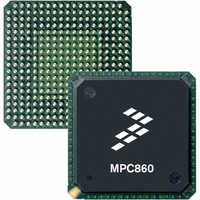MC68360VR25VL Freescale Semiconductor, MC68360VR25VL Datasheet - Page 576

MC68360VR25VL
Manufacturer Part Number
MC68360VR25VL
Description
IC MPU QUICC 25MHZ 357-PBGA
Manufacturer
Freescale Semiconductor
Datasheets
1.MC68EN360VR25L.pdf
(14 pages)
2.MC68EN360VR25L.pdf
(2 pages)
3.MC68360AI25L.pdf
(962 pages)
Specifications of MC68360VR25VL
Processor Type
M683xx 32-Bit
Speed
25MHz
Voltage
3.3V
Mounting Type
Surface Mount
Package / Case
357-PBGA
Family Name
M68000
Device Core
ColdFire
Device Core Size
32b
Frequency (max)
25MHz
Instruction Set Architecture
RISC
Operating Supply Voltage (max)
3.3V
Operating Supply Voltage (min)
2.7V
Operating Temp Range
0C to 70C
Operating Temperature Classification
Commercial
Mounting
Surface Mount
Pin Count
357
Package Type
BGA
Lead Free Status / RoHS Status
Lead free / RoHS Compliant
Features
-
Lead Free Status / Rohs Status
Compliant
Available stocks
Company
Part Number
Manufacturer
Quantity
Price
Company:
Part Number:
MC68360VR25VL
Manufacturer:
Exar
Quantity:
160
Company:
Part Number:
MC68360VR25VL
Manufacturer:
Freescale Semiconductor
Quantity:
10 000
Company:
Part Number:
MC68360VR25VLR2
Manufacturer:
Freescale Semiconductor
Quantity:
10 000
- Current page: 576 of 962
- Download datasheet (4Mb)
Serial Communication Controllers (SCCs)
This command may be executed at any time, regardless of whether the Ethernet channel is
enabled.
If an address from the hash table must be deleted, the Ethernet channel should be disabled,
the hash table registers should be cleared, and the SET GROUP ADDRESS command must
be executed for the remaining desired addresses. This is required because the hash table
may have mapped multiple addresses to the same hash table bit.
7.10.23.11 ETHERNET ADDRESS RECOGNITION. The Ethernet controller can filter the
received frames based on different addressing types: physical (referred to as individual),
group (referred to as multicast), broadcast (an all-ones group address), and promiscuous.
The difference between an individual address and a group address is determined by the I/
G bit in the destination address field. A flowchart for address recognition on received frames
is shown in Figure 7-70.
In the physical type of address recognition, the Ethernet controller will compare the destina-
tion address field of the received frame with the physical address that the user programs in
the PADDR1. Alternatively, the user may perform address recognition on multiple individual
addresses using the IADDR1–4 hash table. See 7.10.23.12 Hash Table Algorithm for more
information.
In the group type of address recognition, the Ethernet controller will determine whether the
group address is a broadcast address. If broadcast addresses are enabled, then the frame
is accepted. If the group address is not a broadcast address, then the user may perform
address recognition on multiple group addresses using the GADDR1–4 hash table. See
7.10.23.12 Hash Table Algorithm for more information.
In the promiscuous mode, the Ethernet controller will receive all the incoming frames regard-
less of their address, unless the RRJCT pin is asserted.
If an external CAM is used for address recognition, then the user should select the promis-
cuous mode, and the frame can be rejected by assertion of the RRJCT pin during the recep-
tion of the frame. The on-chip address recognition functions may be used in addition to the
external CAM address recognition functions.
7-252
If the external CAM is used to store addresses that should be re-
jected, rather than accepted, then the use of the RRJCT pin by
the CAM should be logically inverted.
Freescale Semiconductor, Inc.
For More Information On This Product,
MC68360 USER’S MANUAL
Go to: www.freescale.com
NOTE
Related parts for MC68360VR25VL
Image
Part Number
Description
Manufacturer
Datasheet
Request
R
Part Number:
Description:
Manufacturer:
Freescale Semiconductor, Inc
Datasheet:

Part Number:
Description:
MC68360 MC68360 Multiple Ethernet Channels on the QUICC
Manufacturer:
Motorola / Freescale Semiconductor

Part Number:
Description:
MC68360 Implementing an 8 bit Eprom for an MC68EC040-MC68360 System
Manufacturer:
Motorola / Freescale Semiconductor

Part Number:
Description:
MC68360 Interfacing the MC68060 to the MC68360
Manufacturer:
Motorola / Freescale Semiconductor

Part Number:
Description:
MC68360 MC68360 RAM Microcode Package Option Overview
Manufacturer:
Motorola / Freescale Semiconductor

Part Number:
Description:
MC68360 MC68360 CPM-CPU Interaction
Manufacturer:
Motorola / Freescale Semiconductor

Part Number:
Description:
MC68360 Interfacing SDRAM to the MC68360 QUICC Device
Manufacturer:
Motorola / Freescale Semiconductor

Part Number:
Description:
MC68360 Interfacing the QUICC to a MCM516400 (4Mx4 10-12 column-row) DRAM
Manufacturer:
Motorola / Freescale Semiconductor

Part Number:
Description:
MC68360 Interfacing the 68360 (QUICC) to T1-E1 Systems
Manufacturer:
Motorola / Freescale Semiconductor

Part Number:
Description:
MC68360 Multiple QUICC Design Concept
Manufacturer:
Motorola / Freescale Semiconductor
Part Number:
Description:
Manufacturer:
Freescale Semiconductor, Inc
Datasheet:
Part Number:
Description:
Manufacturer:
Freescale Semiconductor, Inc
Datasheet:
Part Number:
Description:
Manufacturer:
Freescale Semiconductor, Inc
Datasheet:
Part Number:
Description:
Manufacturer:
Freescale Semiconductor, Inc
Datasheet:
Part Number:
Description:
Manufacturer:
Freescale Semiconductor, Inc
Datasheet:











